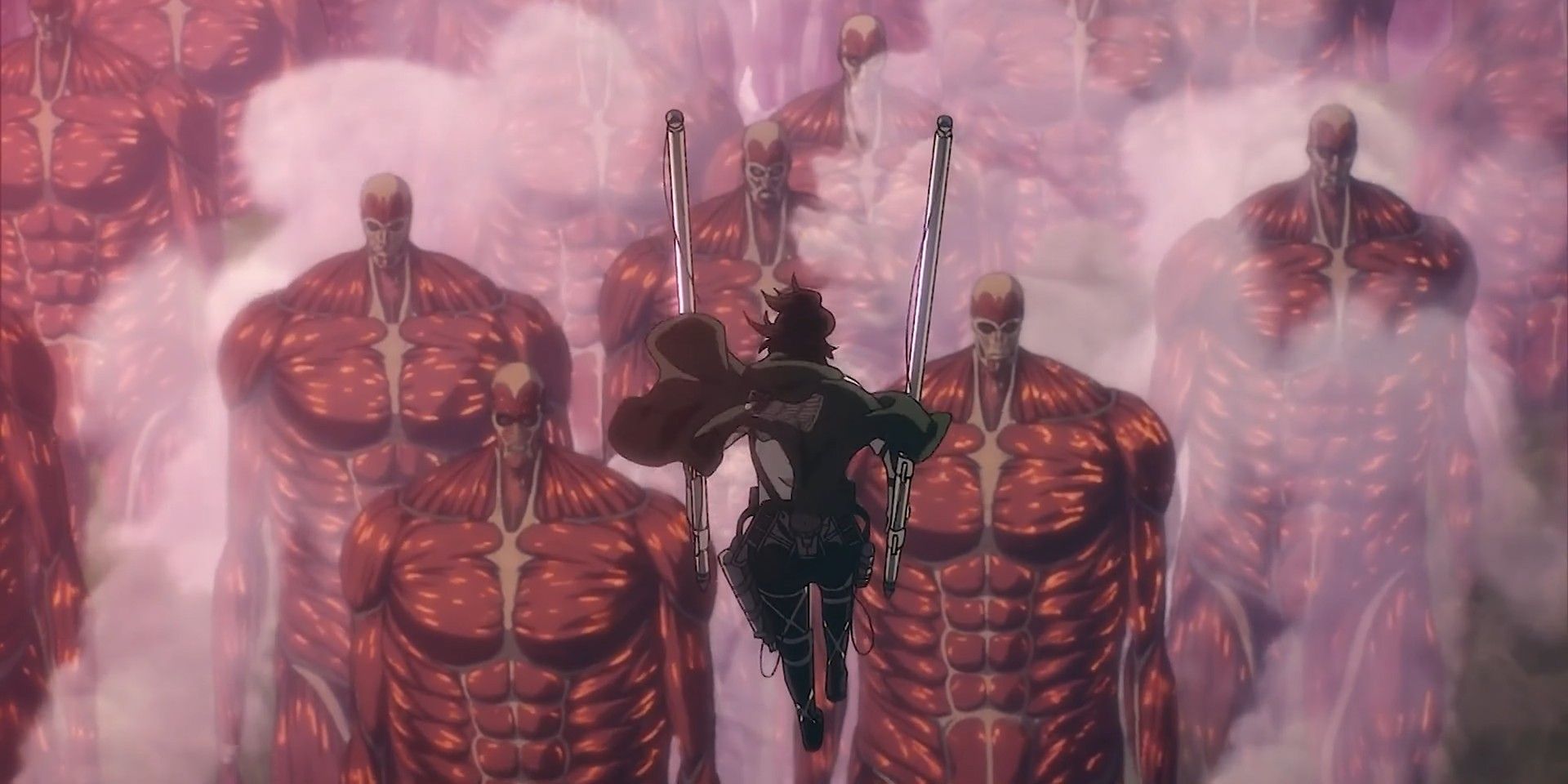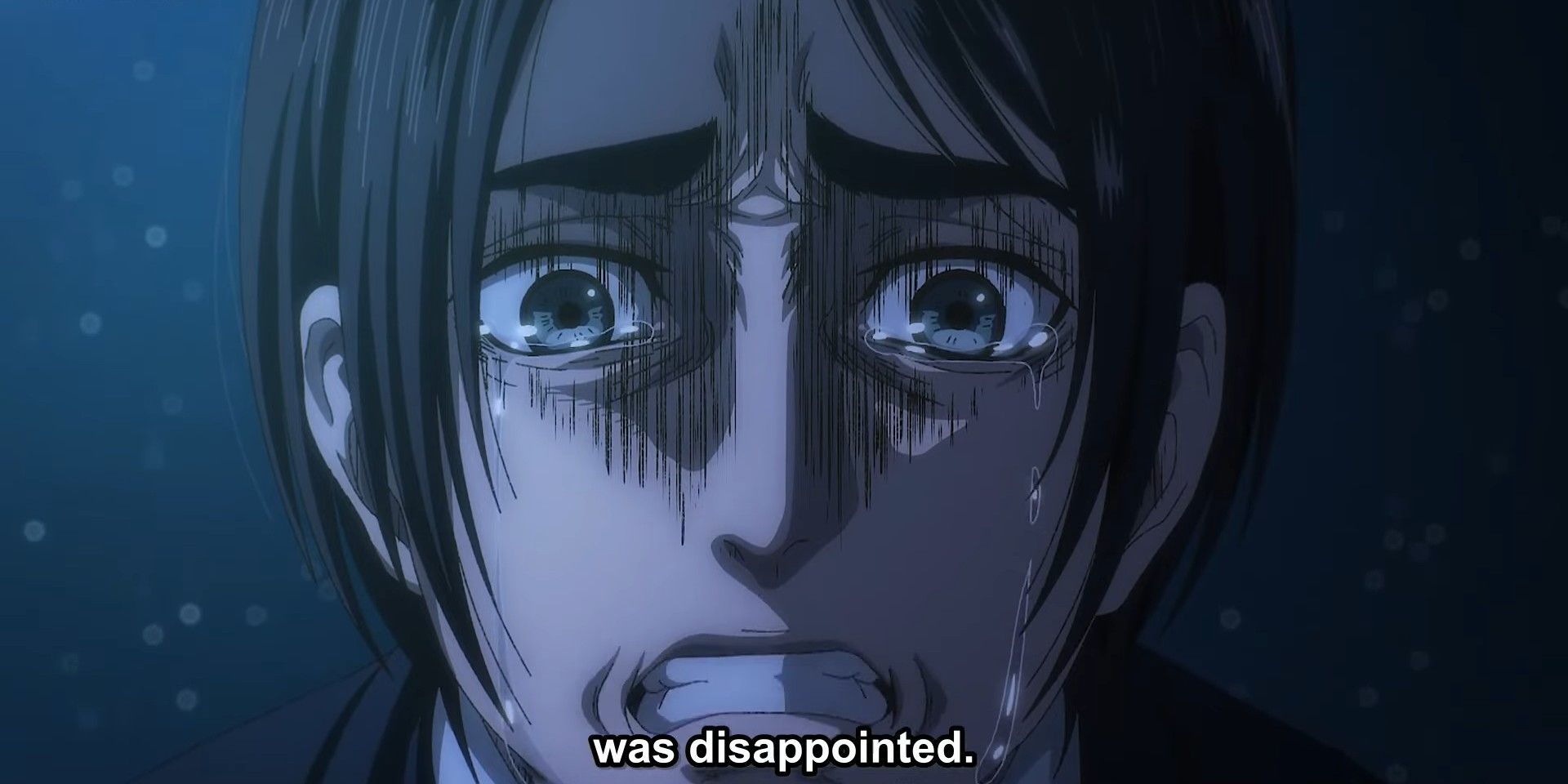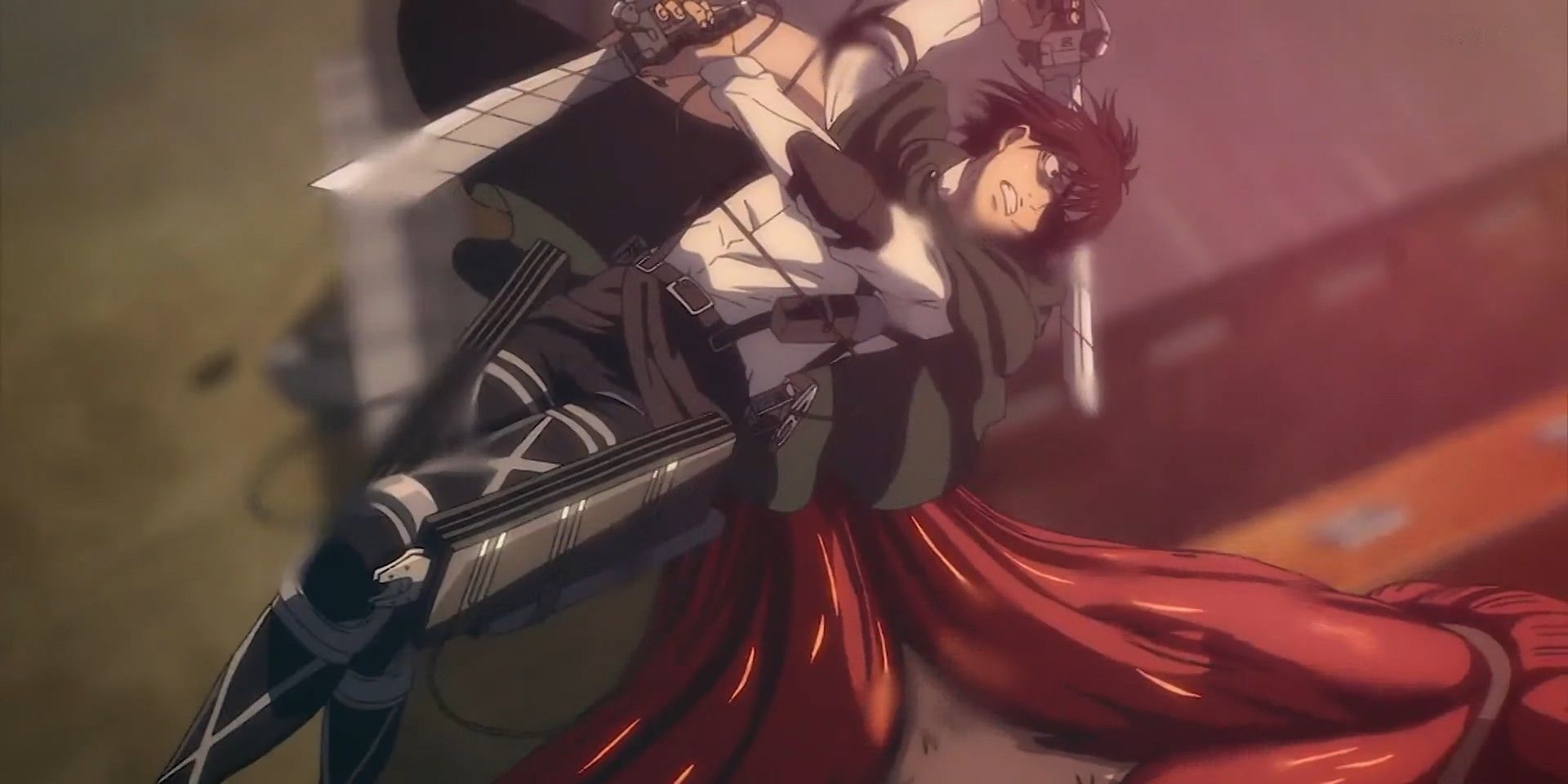The absolute pinnacle of a medium is a hard point to hit, but, in a tour-de-force of anime storytelling, Attack on Titan has returned in simply marvelous fashion, dispelling all concerns of fans and critics alike. Coming back from a 10-month hiatus to set off “The Final Chapters” of the long-running epic, Attack on Titan managed to achieve something few anime installments, or in fact any television program in general, has ever achieved: a perfect hour.
Set amidst the candy-colored skies of a world infested with giant cannibalistic monsters who crush anything in their path, “The Final Chapters (Part 1)” started off strong, with an absolutely harrowing account of The Rumbling as millions of Colossal Titans swept through the human civilization of Marley in a wave of desolation. Not content to rest upon that breathtakingly rendered scene, the real dramatic thrust of the episode is the surviving members of the 104th Training Corps preparing for battle against the now grotesquely transformed Eren Yeager. It all harmonizes together to make an exceptionally well-composed set-up for what is sure to be a tremendous final battle.
Attack on Titan Shows The Horrors of War
The mark of a good narrative is a certain ease with which a drama navigates the audience through a world's emotional reality while still maintaining a visually enthralling ride through an engaging series of events. Though Attack on Titan was criticized throughout Season 4 for its relentlessly bleak story with relatively few action high points, Attack on Titan proved it was saving the best for last with “The Final Chapters,” a complete-feeling and ultimately riveting dive into a world in the midst of a nightmarish apocalypse, where a one-time shonen protagonist has developed godlike power and is attempting to literally smash out humanity. And the only thing standing in his way are a bunch of kids with swords and vertical maneuvering equipment along with a few titans who seem to have been on the losing end of most of their battles.
Attack on Titan has long been at the center of controversy for what has been perceived as a dramatic shift in tone towards the end of the series since it was first published in Hajime Isayama’s “The War for Paradis” arc. Though certainly a philosophical journey, which begs a fair bit of patience and attention from the audience due to its intensive sequences of twists, revelations, and betrayals, Season 4 has for many been a slow-paced and mostly low-key affair, punctuated with a smattering of excited staccato notes towards the end. Though some of these moments found acclaim among the fanbase, including Grisha Yeager’s tale of woe told through his regretful, time-twisted memories, the infamous heel-turn of Eren was met with a tepid response, much the same as what happened when the equivalent manga chapters released.
Animation studio MAPPA did not let that criticism go unheeded, and, as if in direct answer to these questions of pacing, the presentation of Attack on Titan's anime moves forward like a well-oiled machine, with such deft impact in its dramatic beats as to feel completely effortless. The stand-out sequence of course would be The Rumbling, a horrific act of genocide perpetrated by a hideously mutated centipede-like Eren at the head of a stifling swarm of titans. In a particularly heart-rending slice of life/death, the story shifts focus upon young refugee child Ramzi, a downtrodden pickpocket living on the fringes of Marleyan society, and Halil his cautious brother, as they are suddenly run down by the horde of towering skeletal abominations in brutal fashion.
Their plight is then mirrored at the end of the chapter with Hange’s heroic last stand against the front line of the swarm. Far from being powerless, Hange is one of the last remaining members of the Survey Corps from before Eren’s time, and fights fiercely, bravely, and with miraculous effectiveness in buying the small group of Eldian soldiers time to prepare their rudimentary airplane for take-off. Rather than being overwhelmed and squashed flat, Hange’s ferocity succeeds in briefly delaying the march of the unstoppable wave of monsters in one of Attack on Titan's classically electrifying battle scenes that holds its own as a landmark achievement.
The constant mirroring of circumstances within the two-part episode adds incredible dramatic weight to the proceedings, and shines a light on the possible intended message of the piece, also adding in a degree of philosophical horror. Are the images of mass panic and fear exhibited by the people of Liberio, as the two doomed boys flee with their stash of coins, meant as a metaphor for the dehumanizing effects of capitalism and industry? Could Eren’s vicious turn to megalomaniacal villainy therefore be a kind of opposing criticism of political anarchy, as that is the system he grew up in inside the Walled City? While the system of capitalism represented by Marley creates disenfranchised classes such as the refugees, the anarchy promoted on Eldia, while producing soldiers capable of battling any threat, eventually results in the installation of a totalitarian regime with genocidal aspirations.
Attack on Titan is a Visual Masterpiece
Aside from its thematic depth, with the many dialogues running throughout the episode ranging in subject from love with Annie and Armin, duty as the soldiers gather around for one last battle plan, free will as Eren reveals his final ultimatum and the generational effects of hatred as the last remaining Marleyan army general laments his peoples’ cruelty towards the Eldians, this is among the most vibrant and lavish presentations in long-running serial animation, period. The tremendous and destructive confrontation between the Marleyan airship fleet and Eren’s massive, centipede-like Founding Titan form, the size and scale of the monstrous Rumbling as it crushes the cities of man underfoot, and perhaps best of all the ending sequence as the crew arrives on a failing airship, dodging the Beast Titan’s rock volley by mere inches as they prepare to save the vestiges of humanity, are top tier efforts. These are well-realized, immersive sequences ripped straight from the original manga, a wonder to behold even in their abject and weighty tragedy.
It is perhaps this issue of adaptation that becomes so apparent when appraising the merits of the episode, as Attack on Titan's manga, detailed and similarly sequenced as it was, did not have the benefit of motion (or color when first published). With these added attributes, Isayama’s riveting narrative comes alive in scintillating and vivid glory, with every iota of tension magnified to its utmost in this race against time the remaining Eldian soldiers must win. Yet, set against this traditional hero epic is the cost of their history, the events of this story, which has seen all of them become killers of innocents over the course of their senseless war. Even the once wide-eyed and optimistic Armin has now by his own admission killed hundreds of people using the power of the Colossal Titan.
It is this complete product, knit together by thematic cohesion, honest emotionality, and eye-widening action that makes Attack on Titan: The Final Chapters (Part One) a milestone in anime that all others should aspire to.
Attack on Titan: The Final Chapters (Part One) is now streaming on Crunchyroll and Hulu!



